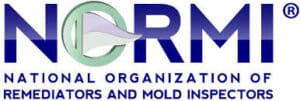Ten Tips to Avoid Structural Mold from Flooding
A few simple steps can save property owners thousands of dollars of damage due to structural mold growth, according to Doug Hoffman, executive director of the National Organization of Remediators and Mold Inspectors (www.NORMI.org), a nonprofit organization that trains and certifies indoor air quality professionals.
Taking the necessary steps to avoid structural mold growth not only preserves the integrity of a structure but also the health of its occupants, further explains Kurt and Lee Ann Billings, authors of the book MOLD: The War Within,which details lessons learned from Hurricane Katrina. Flooding area residents must be proactive, act quickly, and use proper personal protection equipment when implementing the following ten steps:
1. Remove any standing water using a pump or a wet vac. If the water damage is from a broken pipe, be sure to turn off the water supply.
2. Remove wet carpets, rugs, draperies and personal belongings. Clear mud and debris from floors and foundation walls to allow the subflooring and foundation to dry.
3. Remove and discard water-saturated sheetrock and insulation 18 inches above the highest watermark to increase structural drying. Remove water-damaged flexible ductwork and water-damaged insulation around metal ductwork.
4. Remove all mold growth on remaining structural building materials by mechanical means or complete removal if necessary. The easiest and most effective way to initially clean mold from structural building materials is to use a commercial wet/dry HEPA vacuum, followed by wiping, scrubbing, scrapping or sanding for complete removal.
5. Don’t use bleach to clean mold. Bleach is an effective sanitizer but it will not remove mold at its “root”. The mold will look like it’s gone but it is not; it will only grow back.
6. Use sanitizers on any portion of the structure contaminated by sewage or flood waters.
7. Dry the structure out as quickly as possible as structural mold begins to form in the first 24-48 hours. As soon as the above removal steps are completed, turn up the heat, circulate the air with fans, and use a dehumidifier to keep the indoor humidity below 50 percent. Hot, dry air dries things faster than cold moist air. If there’s no electricity, open windows and doors to get air moving to speed up the drying process, if weather permits.
8. Check the attic as undetected roof leaks can later cause structural mold problems.
9. Inspect windows on the outside of the structure, checking for damaged caulking and seals that could lead to future water leaks.
10. Don’t seal it up until it’s dry. Siding, sheetrock, and flooring repairs should be done only after the substrates are completely dry. Confirm moisture content by using a moisture meter.
Source: National Organization of Remediators and Mold Inspectors (NORMI)
Aspen professionals are experts at this type of water damage restoration. We can handle cleanup, drying, mold testing, and mold remediation due to a flood or water leak. And we’ll make sure that any mold is gone for good.
We are licensed and insured and members of the National Organization of Remediators and Mold Inspectors (NORMI) and the National Air Duct Cleaners Association (NADCA).
Please contact Aspen Environmental Services for water damage restoration, mold testing, and mold removal at (978) 681-5023. Or email [email protected].



